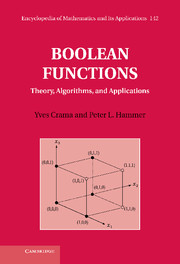A - Graphs and hypergraphs
Published online by Cambridge University Press: 01 June 2011
Summary
This appendix proposes a short primer on graph and hypergraph theory. It sums up the basic concepts and terminology used in the remainder of the monograph. For (much) more information, we refer the reader to numerous excellent books dealing in-depth with this topic, such as Bang-Jensen and Gutin [51]; Berge [71, 72]; Brandstädt, Le, and Spinrad [152]; Golumbic [398]; Mahadev and Peled [645]; or Schrijver [814].
Undirected graphs
An undirected graph, or graph for short, is a pair of finite sets G = (V, E) in which V is the set of vertices of the graph, and E is a set of unordered pairs of vertices called edges of the graph. Abiding by widespread conventions, we often use the notation (u,v), or even simply uv, for an edge {u,v}. Occasionally, we consider undirected graphs with loops, where a loop is an edge of the form (v,v) for v ∈ V (we may view a loop as an edge of cardinality 1).
A graph can be represented as a diagram consisting of points (vertices) joined by lines (edges), as in Figure A.1.
When e = (u,v) is an edge, we say that vertices u and v are adjacent, that u is a neighbor of v, that u and v are incident to e, that u and v are the endpoints of e, and so forth. The neighborhood of a vertex u ∈ V is the set N(u) = {v ∈ V : (u,v) ∈ E}.
- Type
- Chapter
- Information
- Boolean FunctionsTheory, Algorithms, and Applications, pp. 609 - 614Publisher: Cambridge University PressPrint publication year: 2011



